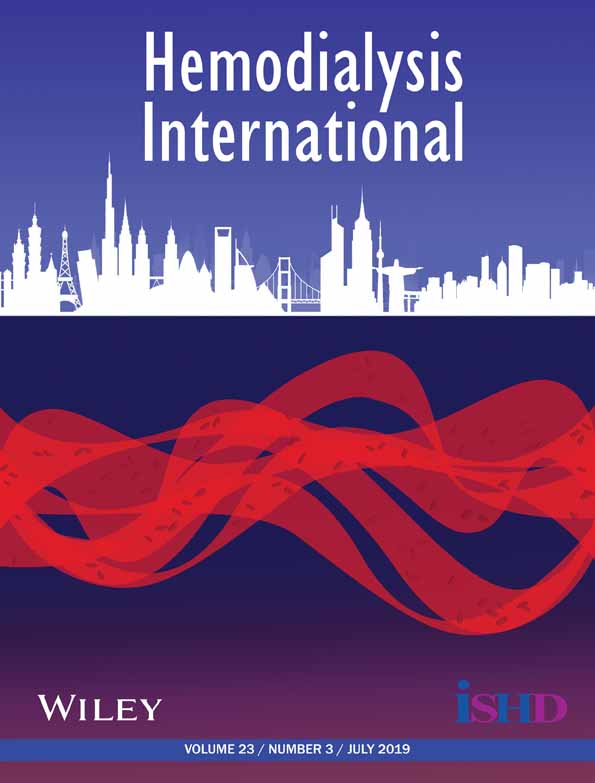The relationship between serum magnesium levels and mortality in non-diabetic hemodialysis patients: A 10-year follow-up study
Abstract
Introduction Recently, although there are many reports showing that serum magnesium concentration is a predictor of mortality in dialysis patients, the observation periods of those reports were of short duration, typically around 12 months. Thus, we investigated this relationship over a longer follow-up period.
Methods This retrospective, observational study included a total of 83 non-diabetic hemodialysis patients. The follow-up period was 120 months. Patients were divided into two groups, those with serum magnesium ≥2.5 mg/dL (Mg ≥2.5 mg/dL group) and serum magnesium <2.5 mg/dL (Mg <2.5 mg/dL group), and Kaplan-Meier analysis and Cox proportional hazards analysis were conducted. In addition to the above analysis, single and multiple regression analysis were performed at baseline to reveal the relationship between serum magnesium and clinical parameters.
Findings During the follow-up period, 31 out of 83 patients died. Kaplan-Meier analysis showed a significantly higher incidence of death in the Mg <2.5 mg/dL group (log-rank test 4.951, P = 0.026). Multivariate Cox proportional hazards analysis showed a 62% decreased risk of mortality in the Mg ≥2.5 mg/dL group compared to the Mg <2.5 mg/dL group after adjustment for several confounding factors. Simple correlation coefficient analysis showed positive correlations of serum magnesium levels with serum creatinine, phosphorus, high-density lipoprotein, ankle-brachial index and KT/V, and a negative correlation with age. Multiple linear regression analysis showed that the ankle-brachial index was the only parameter that had a positive and significant correlation with the serum magnesium level.
Conclusion Our study demonstrated that higher serum magnesium levels were associated with improved survival in non-diabetic hemodialysis patients.




